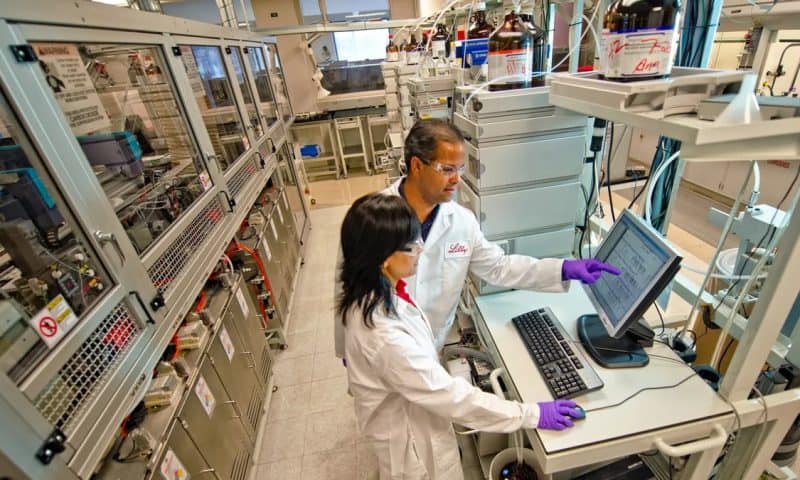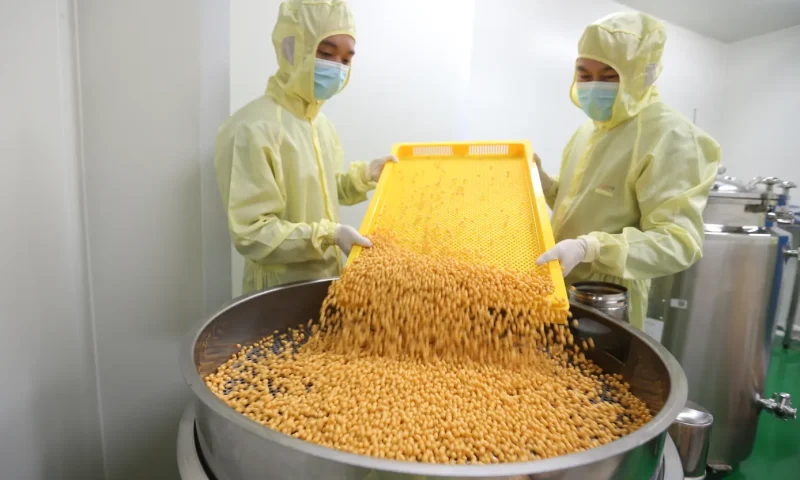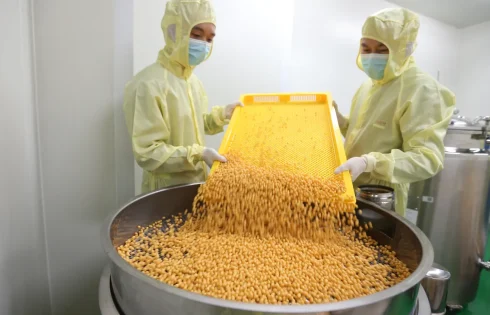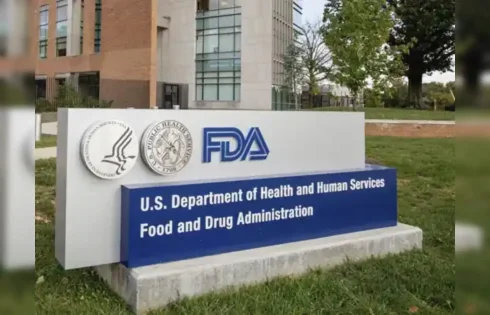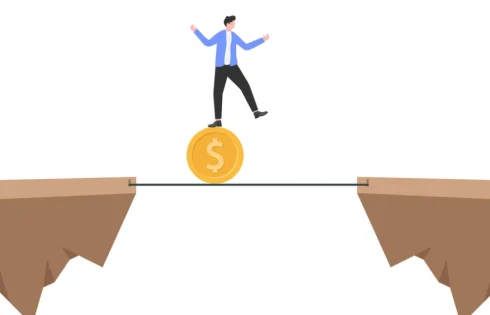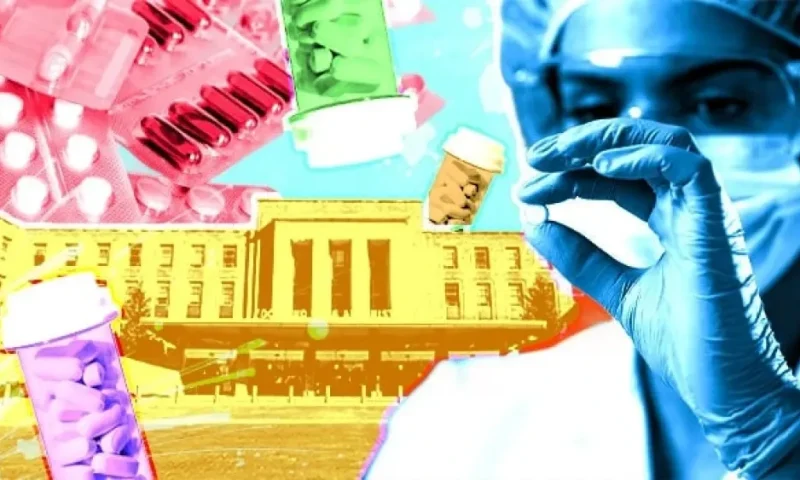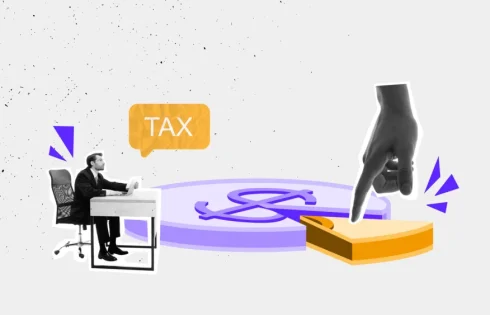StockWatch: Investors Hungry for Lilly after Diabetes Pill Aces Phase III Trial
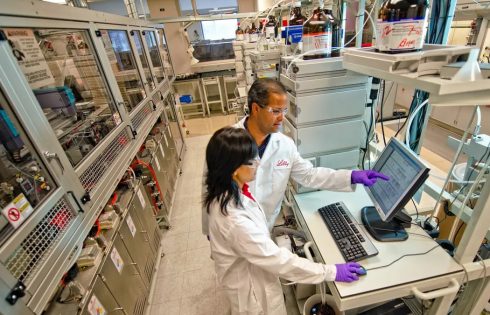
No sooner did Eli Lilly (NYSE: LLY)’s oral diabetes candidate orforglipron make history Thursday as the first oral small molecule glucagon-like peptide-1 (GLP-1) receptor agonist to ace a Phase III trial when investors roared their approval with a buying surge that sent the pharma giant’s stock soaring Thursday.
Lilly trumpeted positive topline results from ACHIEVE-1 (NCT05971940), showing that orforglipron met the trial’s primary endpoint of superior A1C reduction vs. placebo at 40 weeks. Patients treated with the diabetes pill showed an average of 1.3% to 1.6% lower A1C compared with a baseline of 8.0%.
But the pharma giant appeared to have especially wowed investors with results from two key secondary endpoints in ACHIEVE-1, which randomized 559 participants:
- More than 65% of participants treated with the trial’s highest dose of orforglipron (36 mg) showed A1C that was less than or equal to 6.5%—below the American Diabetes Association’s (ADA) minimum threshold for diabetes.
- Also, at that highest dose, orforglipron patients lost an average of 16 pounds, about 7.9% of their body weight.
No sooner did Eli Lilly (NYSE: LLY)’s oral diabetes candidate orforglipron make history Thursday as the first oral small molecule glucagon-like peptide-1 (GLP-1) receptor agonist to ace a Phase III trial when investors roared their approval with a buying surge that sent the pharma giant’s stock soaring Thursday.
Lilly trumpeted positive topline results from ACHIEVE-1 (NCT05971940), showing that orforglipron met the trial’s primary endpoint of superior A1C reduction vs. placebo at 40 weeks. Patients treated with the diabetes pill showed an average of 1.3% to 1.6% lower A1C compared with a baseline of 8.0%.
But the pharma giant appeared to have especially wowed investors with results from two key secondary endpoints in ACHIEVE-1, which randomized 559 participants:
More than 65% of participants treated with the trial’s highest dose of orforglipron (36 mg) showed A1C that was less than or equal to 6.5%—below the American Diabetes Association’s (ADA) minimum threshold for diabetes.
Also, at that highest dose, orforglipron patients lost an average of 16 pounds, about 7.9% of their body weight.
“The results are outstanding,” declared Akash Tewari, equity analyst with Jefferies, in a research note. Outstanding enough, he said, to raise his firm’s peak sales projection for orforglipron by 10%, from ~$39 billion to $43 billion, compared with a $31 billion consensus peak sales estimate cited by Tewari. He also raised Jefferies’ 12-month price target on Lilly shares about 4%, from $1,020 to $1,057.
Investors shared Tewari’s enthusiasm for orforglipron, sending Lilly shares surging 14% Thursday, from $734.90 to $839.96 (U.S. markets were closed on Good Friday). Thursday’s jump almost surpassed Lilly’s biggest-ever one-day gain of 17.7% achieved on June 29, 2000. That day, Lilly reported positive clinical results for a sepsis shock treatment later approved as Xigris® (drotrecogin alfa [activated]) but voluntarily withdrawn from the market in 2011 after it failed the Phase III PROWESS-SHOCK trial (NCT00604214).
“Preeminent player”
Jared Holz, healthcare equity strategist with Mizuho Securities America, predicted in a research note reported by Bloomberg News that Lilly “will remain the preeminent player in this category for a while as its lead over peers, both in pharma and biotech, widens on the back of this data.”
Those peers begin with the longtime market leader in sales of GLP-1 diabetes and obesity treatments Novo Nordisk (NASDAQ Copenhagen: NOVO-B and NYSE: NVO), whose blockbuster-level offerings in the category include semaglutide, marketed to treat type 2 diabetes as Ozempic® and marketed to treat obesity as Wegovy®.
Novo’s U.S. American Depositary Receipts fell nearly 8% Thursday on Lilly’s good news, from $62.88 to $58.08, though the company’s main Copenhagen shares only dipped 1% from DKK 425.65 ($64.81) to DKK 421.25 ($64.14).
BMO Capital Markets analyst Evan David Seigerman downgraded Novo Nordisk shares on Thursday from “Outperform” to “Market Perform,” and cut the firm’s 12-month price target on Novo Nordisk shares 39%, from $105 to $64. Seigerman reasoned that Lilly had made sizable advancements in its commercial and clinical portfolio, causing it to overtake Novo’s early lead.
“Has the tortoise caught the hare?” Seigerman asked, not so rhetorically, as reported by Barron’s. “Lilly has made sizable advancements in its commercial and clinical portfolio, causing it to overtake Novo’s early lead.”
Orforglipron is a once-daily small molecule (non-peptide) oral GLP-1 receptor agonist that can be taken any time of the day without restrictions on food and water intake. Orforglipron was discovered by Roche-owned Chugai Pharmaceutical, which called the drug OWL833, and was licensed in 2018 by Lilly, which agreed to pay Chugai $50 million upfront.
Lilly also agreed to pay Chugai up to $390 million in potential payments tied to achieving milestones.
“As of December 31, 2024, Chugai is eligible to receive up to $140.0 million contingent upon the achievement of success-based regulatory milestones and up to $250.0 million in a series of sales-based milestones, contingent upon the commercial success of orforglipron,” Lilly disclosed in its Form 10-K annual report for 2024, filed February 19. “During the years ended December 31, 2024, 2023, and 2022, milestone payments to Chugai were not material.”
Some of those potential milestones relate to the development of orforglipron in another metabolic indication. Lilly is conducting Phase III trials of the drug for weight management in adults with obesity or overweight with at least one weight-related medical problem, for which data is expected to be released later this year. Orforglipron is also being studied as a potential treatment for obstructive sleep apnea and hypertension in adults with obesity.
The trials are part of Lilly’s Phase III ACHIEVE clinical development program, which has enrolled more than 6,000 people with type 2 diabetes across five global registrational trials. The Phase III program began in 2023 and will be generating results through 2026.
No liver-related safety issues
A key reason why analysts and investors were so positive on orforglipron was that no liver-related safety issues emerged during ACHIEVE-1. “It looks quite viable,” Tewari enthused.
Hepatoxicity was a key reason why a potential competitor of orforglipron, Pfizer (NYSE:PFE), halted development this past week of its oral GLP-1 receptor agonist danuglipron (PF-06882961), which was being studied for chronic weight management in two Phase III trials (NCT06567327 and NCT06568731). Pfizer disclosed that one patient in one of the dose-optimization studies “experienced potential drug-induced liver injury which resolved after discontinuation of danuglipron.”
However, orforglipron was not without other safety issues, including:
- Diarrhea—19%, 21%, and 26% among patients dosed at 3 mg, 12 mg, and 36 mg, respectively, vs. 9% with placebo.
- Nausea—13%, 18%, and 16%, vs. 2% with placebo
- Dyspepsia—10%, 20%, and 15%, vs. 7% with placebo.
- Constipation—8%, 17%, and 14%, vs. 4% with placebo.
- Vomiting—5%, 7%, and 14%, vs. 1% with placebo.
Overall treatment discontinuation rates due to adverse events were 6% (3 mg), 4% (12 mg), and 8% (36 mg) for orforglipron vs. 1% with placebo
Lilly said it plans to present full results from ACHIEVE-1 at the American Diabetes Association (ADA) 85th Scientific Sessions, set for June 20-23 in Chicago, and publish the data in a peer-reviewed journal.
“While we await more data to be presented at the ADA, we are comforted that no hepatic safety signal was observed, which validates pharmacophores similar to that of orforglipron,” Andy T. Hsieh, PhD, a partner and biotechnology analyst with William Blair, and a colleague, wrote in a research note.
Among pharmacophores similar to orforglipron, Hsieh noted, are aleniglipron (GSBR-1290), an oral small molecule selective GLP-1 receptor agonist being developed to treat obesity by Structure Therapeutics (NASDAQ: GPCR) and AZD5004/ECC5004, a small molecule GLP-1 receptor agonist being developed for type-2 diabetes, obesity, and other comorbidities by AstraZeneca (London Stock Exchange: AZN) via exclusive license from privately-held Eccogene through an up-to-$2 billion-plus collaboration launched in 2023.
Structure shares jumped 17% Thursday from $18.53 to $21.76, while AstraZeneca shares dipped 1% Thursday to 10,124 pence (£101.24 or $134.44).
Data readouts, $60M milestone
Structure is expected to report topline data from two fully-enrolled Phase II trials of aleniglipron totaling more than 300 patients, ACCESS (NCT06693843) and ACCESS II (NCT06703021) by the end of this year. Last October, AstraZeneca paid Eccogene a $60 million milestone payment after dosing the first patient in the Phase IIb program of AZD5004/ECC5004, consisting of two trials, VISTA (NCT06579092) and SOLSTICE (NCT06579105). Estimated primary completion dates are December 2025 for VISTA and January 2026 for SOLSTICE.
GLP-1 treatment developers should fare better with investors, Hsieh observed, than developers of peptide-based incretin drugs for diabetes and obesity. Those include the Terns Pharmaceuticals (NASDAQ: TERN) oral small molecule GLP-1 receptor agonist TERN-601, originally modeled on Pfizer’s danuglipron. TERN-601 is Phase II ready after showing positive Phase I 28-day proof of concept data last September.
Other peptide-based developers include:
- Altimmune (NASDAQ: ALT)—The company last year reported positive data from the Phase II MOMENTUM trial (NCT05295875) assessing pemvidutide in obesity, and later reached an agreement with the FDA on a Phase III obesity program consisting of four trials. Pemvidutide is a peptide-based GLP-1/glucagon dual receptor agonist in development for the treatment of obesity and metabolic dysfunction-associated steatohepatitis (MASH).
- Viking Therapeutics (NASDAQ: VKTX)—Last month the company completed subject enrollment in its Phase II trial (NCT06828055) of the oral tablet formulation of VK2735, the company’s dual agonist of the glucagon-like peptide 1 (GLP-1) and glucose-dependent insulinotropic polypeptide (GIP) receptors. Viking said it expects to report data from the study in the second half of this year.
- Zealand Pharma (NASDAQ Copenhagen: ZEAL.CO)—Zealand found a partner last month for its amylin analog petrelintide when Roche Group (SIX Swiss: RO and ROG; QTCQK: RHHBY) agreed to co-develop and co-commercialize the drug and combination products through an up to $5.3 billion collaboration (of which $1.65 billion came to Zealand upfront). Combination products include a fixed-dose combination product of petrelintide and CT-388, Roche’s GLP-1/GIP receptor dual agonist and lead incretin asset.
Zealand shares sank 4.6%, from DKK 445 ($67.77) to DKK 424.50 ($64.65), while Altimmune rose 3.4% from $4.40 to $4.55, Viking inched up 1.4%, from $23.60 to $23.94, and Terns climbed 7.1% from $2.24 to $2.40.
Leaders and laggards
- Ironwood Pharmaceuticals (NASDAQ: IRWD) shares nosedived 31% from 95 cents to 65 cents Monday after the company said it had engaged Goldman Sachs to explore strategic alternatives. The move followed the FDA telling the company it needed to conduct a confirmatory Phase III trial to seek approval of its once weekly, long-acting synthetic GLP-2 analog apraglutide for patients with short bowel syndrome (SBS) with intestinal failure (IF) who depend on parenteral support. Ironwood said it planned to work with the FDA on the design of a confirmatory Phase III trial and a regulatory path forward. “We are focused on the best path forward to get apraglutide to market, which we believe still has the potential to be a blockbuster drug,” Ironwood CEO Tom McCourt stated.
- uniQure (NASDAQ: QURE) shares surged 38% from $9.39 to $13.00 Thursday after the company announced that its Huntington’s disease candidate AMT-130 had been granted the FDA’s Breakthrough Therapy designation. The designation was supported by clinical data from ongoing Phase I/II trials of AMT-130. In July 2024, uniQure presented interim data at 24 months that showed dose-dependent slowing of disease progression of treated patients compared to a propensity-weighted natural history, based on the composite Unified Huntington’s Disease Rating Scale (cUHDRS). To date, a total of 45 patients have received AMT-130, which earlier received the FDA’s Regenerative Medicine Advanced Therapy (RMAT), Orphan Drug, and Fast Track designations.
- Verve Therapeutics (NASDAQ: VERV) shares rocketed 52% after the company announced positive initial data from the Phase Ib Heart-2 trial (NCT06164730) assessing VERVE-102 in patients with heterozygous familial hypercholesterolemia (HeFH) and/or premature coronary artery disease (CAD). Verve said a single infusion of VERVE-102 led to dose-dependent decreases in blood PCSK9 and LDL-C, with the highest mean reduction in LDL-C of 53% seen among the four patients dosed at 0.6 mg/kg—one of which showed a 69% LDL-C reduction—and mean PCSK9 reduction of 60%. Six patients in the 0.45 mg/kg and four in the 0.3 mg/kg cohorts showed lower mean LDL-C and PCSK9 reductions. Verve said Heart-2 is enrolling participants in the fourth dose cohort of 0.7 mg/kg in the United Kingdom, Canada, Israel, Australia, and New Zealand. Verve shares jumped 26% from $3.26 to $4.12 on April 14, then rose another 21% to $4.97 the following day after Cantor Fitzgerald analyst Rick Bienkowski upgraded the company’s stock from “Neutral” to “Overweight.”

